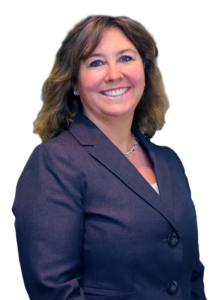by Amanda Milewski, photography by Nikola Tzenov
Carroll women mirror trend of an increasing number taking charge of their money
Suze Orman was a young woman with a degree in social work and a dream of opening a restaurant. Then an unscrupulous broker took advantage of her lack of financial knowledge and, long story short, she lost all the restaurant seed money she had borrowed.
She quickly pivoted and started educating herself about finances, investing, the markets — you name it. And then she applied for and got a job as a stockbroker in the same office where the shifty broker sealed her fate, and the rest, as they say, is history. And now, the self-taught celebrity financial advisor has been managing finances for 40 years.
But why has it taken so long for women as a whole to catch up to what Orman was doing decades ago?
Spending, saving and stereotypes
A whole generation of women — the stay-at-home mothers and housewives of the 1950s — relied on their husband’s income and investments. In those days, few women took charge of their financial futures unless it was a necessity, like in the case of death or divorce.
Despite an increase in the number of working women in the ’60s and ’70s, men still controlled many of the purse strings and the financial sector remained predominantly a man’s world.
Then, in the 1980s, as glass ceilings shattered and the seeds of equal pay were sown, women started to earn more and more earned their places at boardroom tables. Think power suits with shoulder pads. But still, only a relative few followed Orman’s footsteps.
Through the 1990s, women slowly and steadily made progress as wage earners but still lagged behind men when it came to financial literacy and investing.
Fast-forward to the present day, and women control one-third of the world’s wealth despite a persistent pay gap. (According to the Bureau of Labor Statistics, as late as 2020, women still made only 80 cents for every dollar a man earned.) Still, less than half of the U.S. female population invests in the stock market — 48 percent — compared with 66 percent of men. And only 23 percent of financial professionals are women.
Slowly making strides
Although these numbers are low, they represent a major shift in the financial literacy, mindset, and proactivity of women who are managing their and their family’s money.

“In general, women outlive men, and I have met with
a record number of widows recently who were not the usual primary money managers.”
– Deborah A. Williams
Deborah A. Williams, a certified financial planner with Puckett & Sturgill Financial Group in Westminster, noted that the increase in female investors “has been the trend during the last several decades, possibly due to the relaxing of gender stereotyping and the growing earning power of women in the workforce. And even slightly more so in the past two years, possibly due to the increased illness and death rate during the pandemic.”
“In general, women outlive men, and I have met with a record number of widows recently who were not the usual primary money managers. They are taking an active role in handling the estate and taxes so they value professional advice and collaboration with their CPA and attorney that certified financial planners can provide,” Williams said.
It seems that the pandemic spurred many women to take charge of their finances, and not just because they had to in the wake of serious illness or death. According to Fidelity Investments 2021 Women and Investing Study, 67 percent of women are now investing outside of their retirement accounts, which is a 50 percent jump since 2018.
In many ways, the pandemic negatively impacted women more than men. From an economic standpoint, the Bureau of Labor Statistics reported that the unemployment rate for women has increased 2.9 percent more than for men. Women also had higher rates of employment in industries that were hit-hard by pandemic closures such as retail, manufacturing, education, hospitality and food service, noted a July 2021 McKinsey study.
These and many other factors may have prompted more women than ever to take action to secure their financial futures.

“I would encourage young women, when they are just starting out, to have these conversations around finances, to ask the questions and to take advantage of every opportunity to participate and engage”
– Coleen Kramer Beal
Coleen Kramer Beal, a financial advisor at The Velnoskey Wealth Management Group in Westminster, said it’s interesting to see how women of different generations approach their finances. She said it’s not uncommon for older women to attend meetings about finances with their husband, but who have no interest in acutally being involved in the conversation or decisions being made. She said in her experience, that is not the case for younger women.
“The younger generation – these are young women who are reaching out to advisors, trying to understand the financial landscape and even taking the lead on finances in their households,” Kramer Beal said. They want to be involved in investing, estate planning, insurance and taxes, and to understand how all these things work together in their unique financial situation.”
Williams has seen these changes firsthand. “When I first started in this business in the early ’90s, it was rare for women to come in alone or even with their spouse. Witnessing women marginalized as clients was one of the reasons I was compelled to evolve into an advisor role, to provide unbiased and comprehensive financial advice to them,” Williams said.
“Almost 30 years later, there are more women financial advisors locally and many more female clients, including wives alongside their husbands,” William said. She attributed the increase in female clients to a few things — more financial information targeted toward women, information that is easily found on the internet, females making progress toward closing the gender gap as it relates to wages and education, relaxing of gender stereotypes, more prominent women money managers in the financial news and the changing demographics of the county.
“I would encourage young women, when they are just starting out, to have these conversations around finances, to ask the questions and to take advantage of every opportunity to participate and engage,” Kramer Beal said.
Gender does matter
Now more than ever, financial products are being marketed solely to women. There are books and podcasts — Orman’s podcast, “Women & Money,” started in 2018 and “Financial Feminist” is a financial literacy podcast by money expert Tori Dunlap. There are investment platforms — like Ellevest — that consider the hallmarks of women’s careers including breaks to care for children or aging parents, pay gaps as well as a lengthy lifespan. And there are e-learning membership platforms — like Female Invest — that offer webinars and master classes with experts and a forum for members through its online community.
Is there really a difference in men and women when it comes to financial literacy and investing? The answer is yes. In addition to the factors mentioned above — breaks in a career, pay gaps and a typically longer lifespan than men — women tend to invest differently and with a different eye to the future.
According to James Ourand, professor of business and accounting at Carroll Community College, women and men differ in several ways when it comes to finances and investing. “Women often have a more conservative approach to investing and do a better job of considering the complete picture. Their investment decisions tend to be more long term and better account for family needs,” he said. He asserted that “women are more focused on health issues and want to plan for those expenses more than men and that women tend to gravitate toward financial products that are linked to social causes,” among other differences.

“Women often have a more conservative approach to investing and do a better job of considering the complete picture. Their investment decisions tend to be more long term and better account for family needs.”
– James Ourand
Williams agreed, to a point. “In general, women used to be more conservative in their investment approach than their male counterparts,” she affirmed, “but I believe that is also changing as they become more financially educated and empowered. I have noticed many more women business owners contacting us to set up retirement plans; that tells me they are willing to take educated financial risks.”
Could the increase in women in the financial sector, albeit a slow march, also be attributed to how well we teach young girls and women about financial literacy? It would be great to correlate the two, but according to Next Gen Personal Finance, only 10 states require an actual financial literacy course to graduate. And only 11 others have a financial literacy requirement that can be met by substituting another business-type course or by taking a course that includes some type of financial literacy instruction.
Carroll County Public Schools is ahead of the curve in this regard. In 2006, the Board of Education approved a half-credit financial literacy course that is required for graduation; the change became effective during the 2007-2008 academic year. This is despite the fact that Maryland is not one of the states that requires a financial literacy component to graduate.
Jamie Fields has taught financial literacy at Liberty High School for the past four years and said that “the curriculum when taught with engaging supplements does an excellent job at providing young adults with the life skills necessary to be successful when they enter adulthood.”
And although she presents the information in a gender-neutral format, she has noticed that female students tend to be more invested in the careers unit of the course while the boys are more “verbal about their interest or engagement in investing. I do not hear as many female students talking about investment activities.”
Like Fields, Ourand teaches the subject matter in the Carroll personal finance class in a gender-neutral format, but he believes “that the information learned in this class will put women in a better position to make informed decisions and take advantage of other opportunities to learn about finances as they work toward their financial goals.” The personal finance class is part of the college’s general education requirement.

“The curriculum when taught with engaging supplements does an excellent job at providing young adults with the life skills necessary to be successful when they enter adulthood.”
– Jamie Fields
Ourand’s colleague at Carroll, Kristen Maszarose, added that in teaching the personal finance class, she “shows videos and advice from both genders. For females, I reference Suze Orman, Jean Chatzky, Tori Dunlap, etc. These people articulate the importance of personal financial ownership and how one can feel empowered by understanding and utilizing tools for success.”
Ourand also noted that CCPS has taken its commitment to teaching financial literacy one step further with involvement in the national Academy of Finance, in which Carroll Community College also participates. The program offers high school students the opportunity to take finance-specific classes such as accounting and principles of finance, as well as participate in projects and activities focused on finance. According to Ourand, “Participants are students who are interested in pursuing careers in the finance industry and is pretty evenly split between girls and boys.”
The fact that the Academy of Finance participants are roughly an equal number of boys and girls is a good sign, as is more female clients in offices like Williams’. The trend for women to see themselves in the financial sector either as experts and/or consumers is a growing trend in Carroll County as well.



